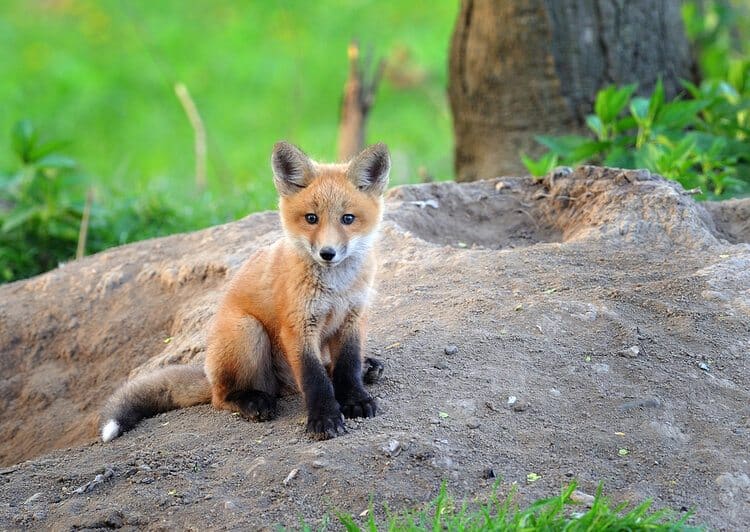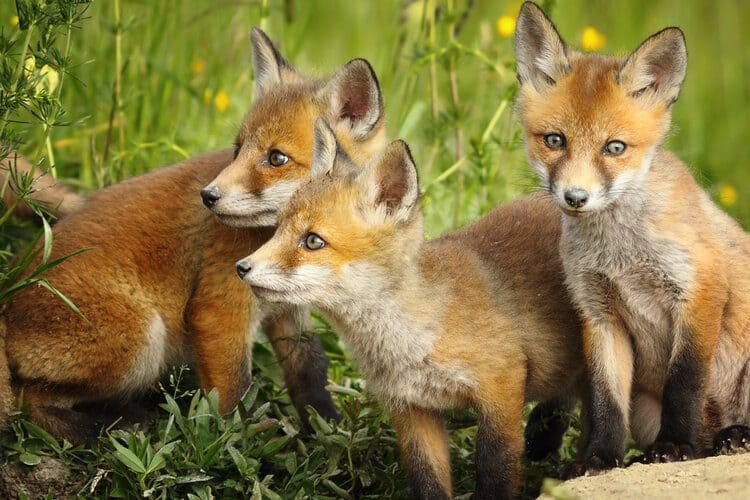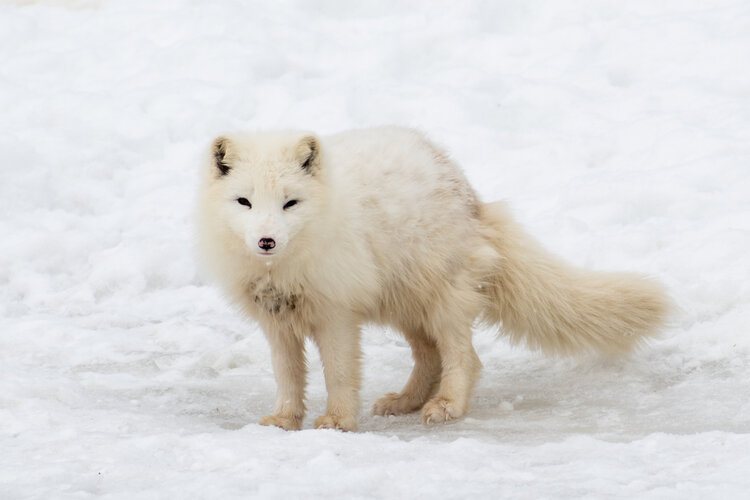Humans don’t have many specific mating patterns. Children are born every month of the year. But things are different for foxes who follow a more specific timeline. Their life cycles are very specific, with all foxes essentially following the same pattern. They mate at the same times and follow the same instinctual patterns, with their life structure following an established pattern throughout the seasons.

Northern vs Southern Hemispheres
While all foxes follow the same basic life cycles, there is a big shift in timing between the northern and southern hemispheres. This is because the seasons occur at opposite times of the year depending on which hemisphere you’re in. Fox life cycle patterns still stick to the seasons, but in the southern hemisphere, you’ll need to shift everything by 6 months.

Fox Life Cycle By Season
The Fox Life Cycle Starts in Spring
For foxes, life begins in the spring. In the northern hemisphere, March is the month with the highest concentration of fox births. September is the equivalent start of spring for the southern hemisphere.
A female fox will give birth in a den during the spring. She stays in the den with the cubs full-time, so the male leaves and continuously brings food back. During this time, the cubs are reliant on their mother for warmth.
It takes about a month until the cubs start leaving the den. During this time, the female starts spending more time outside as well. Around the end of spring, foxes begin to lose their hair in an annual molt, so they can wear a thinner coat for summer.
Summer
Summer marks a big change for the growing cubs as the den is abandoned. The young are forced to start supplying much of their own food at this point, allowing them to learn how to hunt and forage.
The entire family continues to spread out across a larger area during the summer months. Cubs are growing incredibly fast during this time, and by the end of summer, they hardly resemble the little cubs they were at the start of the season.

Autumn
By the time autumn arrives, the cubs are basically fully grown. The family is no longer together. Fights often break out when family members meet. Many of the young, now practically adults, have left the area entirely.
At the start of autumn, the new winter coat should be almost completely full. This is when foxes are generally hunted since their fur looks its best during these months when the full coat is fresh.
Winter
Winter is mating season for foxes. This is when males leave their areas and spread out in search of suitable females to mate with. Once a male finds a good mate, they’ll stay together for several weeks. During this time, they’ll hunt and eat together. Most importantly, they’ll be searching for a new den.
Once they find a den, sometime near the end of winter, the female will hole up in the den and prepare to give birth, starting the entire cycle over once more.

FAQ
How often do foxes mate?
Foxes only mate during one part of the year. Some fox species, such as arctic foxes, are believed to be monogamous, so they’ll only be able to reproduce once each year. Other fox species are known to be promiscuous, and males often seek out several females to mate within a single season.
How long is the fox mating season?
The mating season is very short. Females are only in heat one time, for about three days. But females won’t all go into heat at the same time. This means that a male has several opportunities to mate through the course of the whole mating season, which spans from December until March.
How long does the gestation period last for foxes?
Once a female fox is pregnant, it only takes 53 days on average for the cubs to arrive.


Conclusion
Foxes all follow the same life cycle, though some species have different mating rituals than others. But this seasonal life cycle pattern holds true for foxes of all species. Just remember that the months shift by six in the southern hemisphere, though the seasonal pattern is still the same.
Related Fox Reads:
Feature Image Credit: RT Images, Shutterstock
